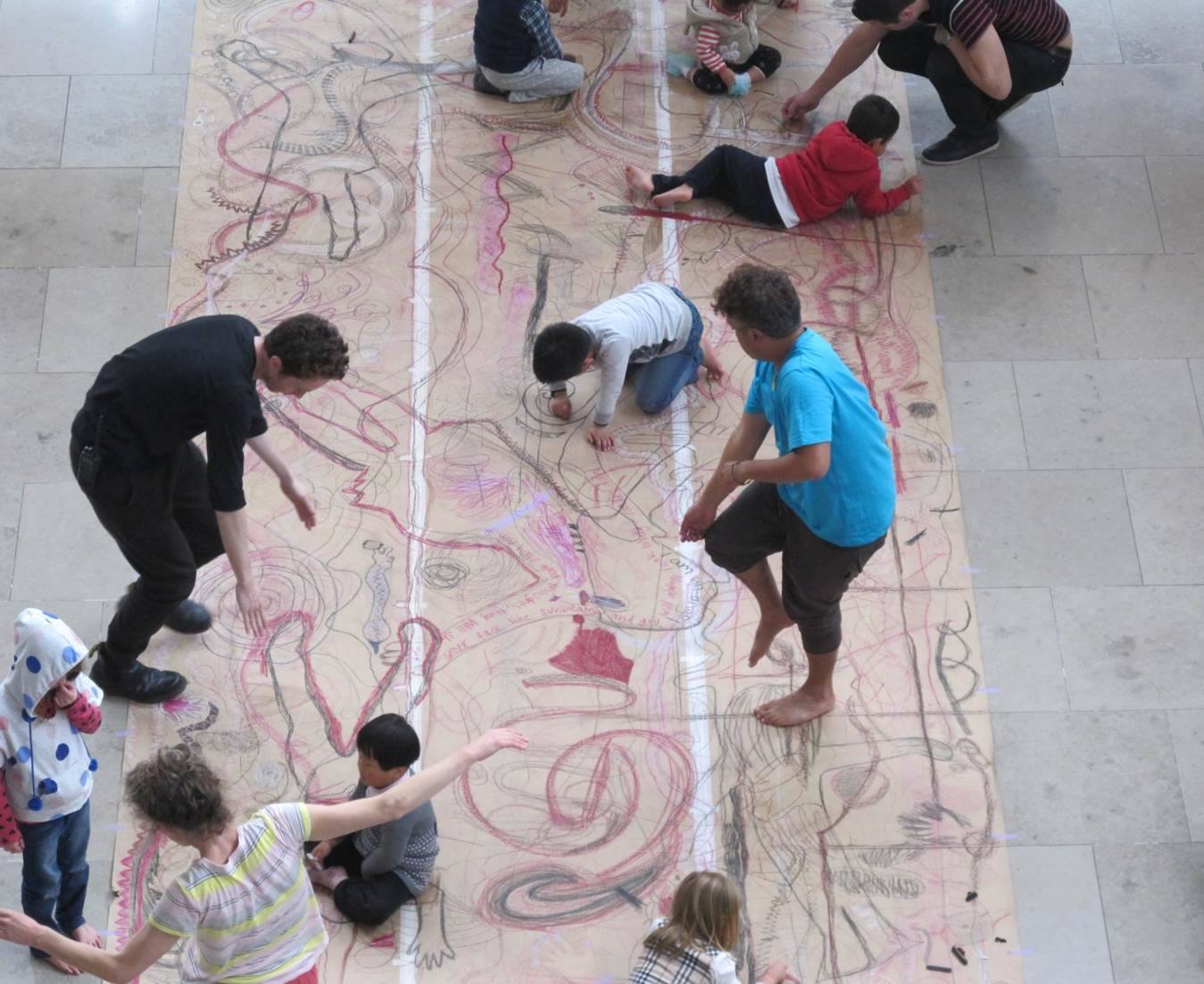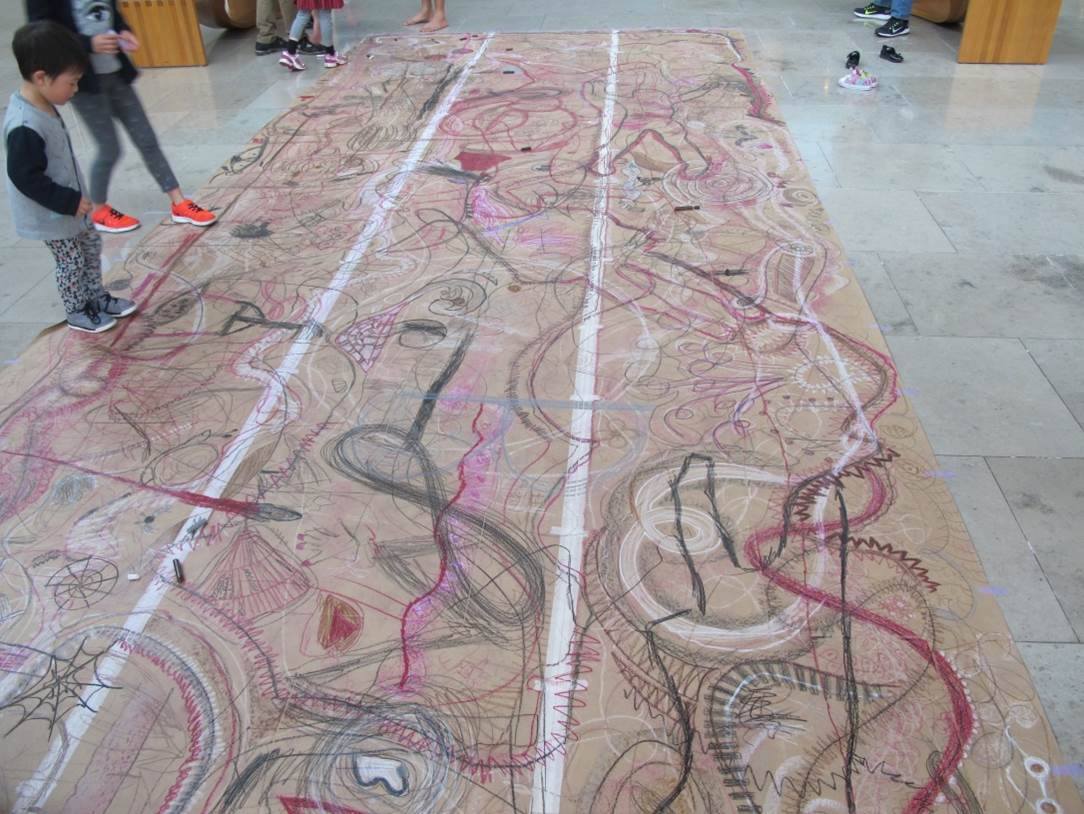Today Facebook lovingly reminded me that a year ago I had facilitated an activity at Auckland Art Gallery Toi o Tāmaki for one of their Saturday Family Drop-in sessions organised by Martin Langdon. The activity we instigated was a collective drawing that was a durational communally made work, with taped-to-the-floor butcher's paper panels and crayons in black, brown and maroon.
There was a crossover of other happenings in the Gallery, including the final weekend of Lisa Reihana’s epic (and since highly awarded) digitally reimagined wallpaper work, in Pursuit of Venus [Infected].
The sense of response both to the exhibition and to the drop-in event was part of a dialogue about how we as artists deal with continuums of place making, the revealing of nonlinear narratives, and a call for more interactive choice making for spectatorship and participation. The crux of these events related ambiguously to ways collective conscious making could be seen as cross-cultural and multi-disciplinary actions, both performance-based and ceremonial in nature.
The day unfolded as most durational space holding does, with a proposition of an open and inclusive space, the first floor area, caretakers – Martin, some Gallery Assistants and myself, and the raw materials – tangible and non-tangible.
I was eager to try out the idea of getting a mass group of people to voluntarily activate the space by drawing upon it, without too much need for a prescribed outcome (aside from drawing and collecting symbolic imagery) and with gentle encouragement and invitation to do so.


